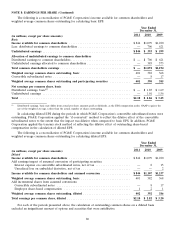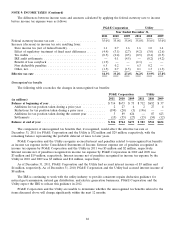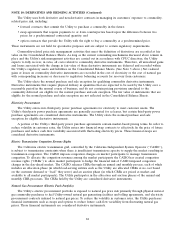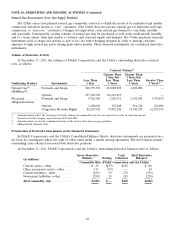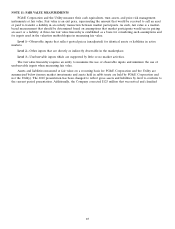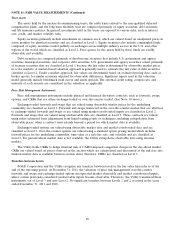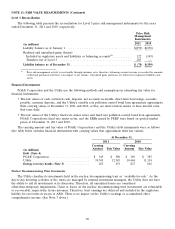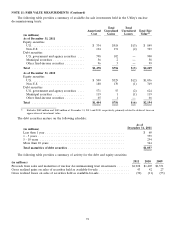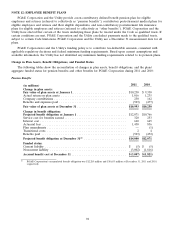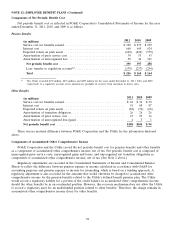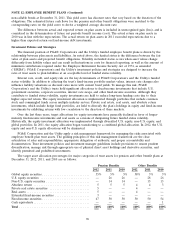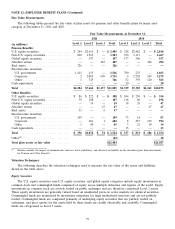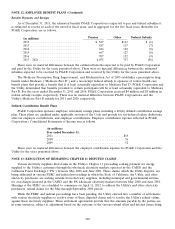PG&E 2011 Annual Report Download - page 94
Download and view the complete annual report
Please find page 94 of the 2011 PG&E annual report below. You can navigate through the pages in the report by either clicking on the pages listed below, or by using the keyword search tool below to find specific information within the annual report.
NOTE 11: FAIR VALUE MEASUREMENTS (Continued)
Level 3 Reconciliation
The following table presents the reconciliation for Level 3 price risk management instruments for the years
ended December 31, 2011 and 2010, respectively:
Price Risk
Management
Instruments
2011 2010
(in millions)
Liability balance as of January 1 ..................................... $(399) $(250)
Realized and unrealized gains (losses):
Included in regulatory assets and liabilities or balancing accounts(1) .......... 122 (149)
Transfers out of Level 3 ......................................... 203 —
Liability balance as of December 31 .................................. $ (74) $(399)
(1) Price risk management activity is recoverable through customer rates, therefore, balancing account revenue is recorded for amounts
settled and purchased and there is no impact to net income. Unrealized gains and losses are deferred in regulatory liabilities and
assets.
Financial Instruments
PG&E Corporation and the Utility use the following methods and assumptions in estimating fair value for
financial instruments:
• The fair values of cash, restricted cash, deposits, net accounts receivable, short-term borrowings, accounts
payable, customer deposits, and the Utility’s variable rate pollution control bond loan agreements approximate
their carrying values at December 31, 2011 and 2010, as they are short-term in nature or have interest rates
that reset daily.
• The fair values of the Utility’s fixed rate senior notes and fixed rate pollution control bond loan agreements,
PG&E Corporation’s fixed rate senior notes, and the ERBs issued by PERF were based on quoted market
prices at December 31, 2011 and 2010.
The carrying amount and fair value of PG&E Corporation’s and the Utility’s debt instruments were as follows
(the table below excludes financial instruments with carrying values that approximate their fair values):
At December 31,
2011 2010
Carrying Carrying
Amount Fair Value Amount Fair Value
(in millions)
Debt (Note 4)
PG&E Corporation ...................... $ 349 $ 380 $ 349 $ 383
Utility ................................ 10,545 12,543 10,444 11,314
Energy recovery bonds (Note 5) ............. 423 433 827 862
Nuclear Decommissioning Trust Investments
The Utility classifies its investments held in the nuclear decommissioning trust as ‘‘available-for-sale.’’ As the
day-to-day investing activities of the trusts are managed by external investment managers, the Utility does not have
the ability to sell its investments at its discretion. Therefore, all unrealized losses are considered
other-than-temporary impairments. Gains or losses on the nuclear decommissioning trust investments are refundable
or recoverable, respectively, from customers. Therefore, trust earnings are deferred and included in the regulatory
liability for recoveries in excess of ARO. There is no impact on the Utility’s earnings or accumulated other
comprehensive income. (See Note 3 above.)
90


